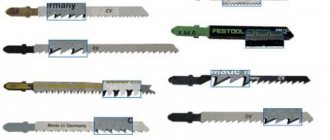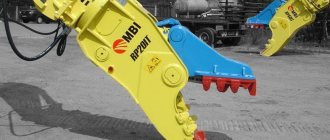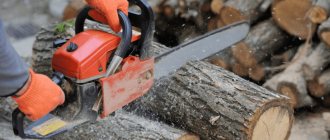The best carpenter's axes
IZHSTAL 030904-120
The company, located in Izhevsk, produces a variety of hand tools, which are then sold at a very low price. And if other budget products have a number of disadvantages, then IZHSTAL axes generally only delight their customers. The model we are considering is a quality product. It uses a wooden handle that practically does not slip in your hands. The instrument turned out to be weighty, which only benefits it.
The manufacturer used hard wood to make the handle. The fastening of the ax turned out to be quite reliable. This tool is recommended for splitting, cutting and processing wood. In particular, the ax has proven itself well in carpentry and cutting wood.
Advantages:
- Reliable wooden handle;
- Weight is 1200 grams;
- Excellent ax handle made of steel;
- Very low cost;
- Well sharpened.
Flaws:
- Approximately every fifth copy is defective;
- No hanging hole.
Husqvarna 5769264-01
One of the best carpenter's axes. Its handle was made of wood, and it has an ergonomic shape and a hole for hanging. The total length of the tool is 375 mm. It differs in that the ax handle here sits on the handle, as if poured into it. Some buyers have no complaints even after two years of regular use of this ax. The fastening system consists of two wedges: one is wooden and the other is steel.
The only serious drawback of the product is its price. This is explained by the fact that Swedish steel was used to make the butt. We must also not forget that Husqvarna is not a Russian company, and therefore certain funds were spent on the delivery of the tool. Otherwise, it is impossible to find fault with the axe.
Advantages:
- Sharp sharpening;
- The butt is made of Swedish steel;
- The handle hardly slips in your hands;
- High-quality wood was used to produce the handle;
- Optimal weight (985 g);
- Good case included;
- There is a hole for hanging on a hook.
Flaws:
MATRIX 21640
Nowadays, axes with handles made of rubberized fiberglass are increasingly coming on sale. MATRIX 21640 is one of them. This type of handle is good for several reasons. Firstly, it reduces the weight of the tool. In this case, the mass does not exceed 0.6 kg. Secondly, such an ax does not slip in your hands at all. Thirdly, it is impossible to damage the fiberglass handle, which has a positive effect on the service life of the tool.
The ax handle of MATRIX 21640 is made of 60G steel; the open forging method was used for this purpose. Buyers note that the handle of this tool does not deform under any conditions. They are also delighted with the low expenditure of force, which is facilitated by the decent inertia of the impact.
Advantages:
- The handle cannot be damaged;
- The rubberized surface absorbs all vibrations;
- Minimum expenditure of effort;
- The ax does not slip in your hands;
- Quite sharp sharpening;
- Durable ax handle;
- There is a hole for hanging.
Flaws:
There is not enough weight for the most effective cutting.
How to use a cleaver correctly
Even with the best cleaver, in the absence of experience, it is impossible to establish effective work and rationally organize the process of chopping wood. If you have never chopped wood yourself, then a few tips will certainly help you in this difficult work.
The work should be done on the widest deck available, installed on level ground. Logs will be placed on this deck, like on a chopping block.
In addition to arranging a place to work, you should also pay attention to the logs themselves - freshly sawn logs, due to their natural moisture, will split much harder than dry ones
The harvested firewood is selected according to the size of the furnace or fireplace. Their length should not exceed three quarters of the length of the working space of the stove, and their diameter should be 6-10 cm. Such parameters ensure long-lasting combustion in the combustion chamber of each wood stack and allow fuel to be consumed rationally and economically.
Chopping wood with a cleaver
The number of individual parts that are obtained by splitting a lump depends on its size. From small logs you usually get from 2 to 4 logs, from large ones - more than 8.
Like any task that seems simple at first, the process of chopping wood can be improved to get the job done faster and with less effort.
It is recommended to dry the firewood immediately before harvesting. In winter, wet logs should be allowed to freeze so that the structure of the wood is not too loose and soft.
If there is a crack on the log, you should try to get into it. If you were unable to get inside the crack, you need to take a sledgehammer and hit the butt of the cleaver. If you don’t have a sledgehammer, you should take a deck with a cleaver stuck in it, swing it, turn it over in the air and hit the block with all your might. After such radical actions, the log must definitely split.
If there are knots in the log, you should hit directly between them or along one of them. If the same problem occurs as with a crack, the algorithm of actions is the same.
Chopping wood yourself is not that difficult. The main thing is to take your time and not give up at the first failures.
Safety precautions when chopping wood
When chopping wood with a hand cleaver, the following requirements must be observed:
- the log is placed on the edge of the deck farthest from the person; if you miss, the ax will stick into the deck, and not into the leg;
- the legs should be spread wide apart so that a broken cleaver does not hit the leg;
- split logs should be immediately taken away or thrown away from under your feet;
- there should be no other people on the swing line;
- Protective gloves, sturdy shoes and goggles are required.
When working with mechanized axes, the following rules are added:
- do not stand on the line of division;
- Place the chock and pick up the chopped logs only when the feed is turned off.
Before turning on the device, be sure to inspect it and check its serviceability.
Chopping wood - with a properly selected manual or mechanized splitter, turns from a tedious task into easy entertainment. With certain working and design skills, simple models of cleavers can be assembled in a home workshop. Compliance with safety regulations will help preserve health and life.
Characteristics
Professional lumberjacks use this option because it has a shifted center of gravity. This saves energy during operation. This type of work mechanism is not suitable for traditional work. However, it is used to split wood by people who have no experience. In comparison with its analogues it looks very nice.
Main characteristics:
- based on carbon steel;
- the metal part is covered with a stainless steel Teflon coating;
- The handle is based on polyamide and fiberglass reinforcement;
- the butt is pressed against the polymer base. This prevents the ax handle from becoming separated.
Structure and varieties of cleaver
There are two types of firewood ax:
- heavy, with a wedge-shaped blade, similar to a hammer or sledgehammer with a sharpened side;
- a little lighter, sharper, with protrusions-ears on the sides.
The sharp part of the instrument's head is called the blade, and the wide and blunt part is called the butt. The long handle, called the ax handle, is made from hard and flexible wood of elm, maple and birch. Handles made of oak are also found, but they are short-lived and inconvenient to use, since only tough wood can dampen shock and vibration when struck with an ax.
The ideal ax handle for a cleaver should be light, elastic and have the obligatory curl of the wood. It is quite difficult to make, but a tool with such a handle will serve faithfully for many years. The weight of the cleaver can vary, from two to five kilograms. When swinging, they generate great kinetic energy, without which it would be impossible to split hard sawn logs into firewood. Its blade has a special sharpening angle (45-50 degrees), which prevents the tool from getting pinched in the body of the wood being processed.
Rules of care
Axes require careful care. This will extend the service life. Some care tips:
- wipe the handle and blade from moisture and dirt to prevent rust from forming;
- do not work like a sledgehammer, do not strike with a butt;
- it is forbidden to loosen it to the sides if it is stuck;
- stored in a protective case;
- storage in hot structures is unacceptable;
- avoid exposure to the sun's rays, be sure to cover them;
- apply a thin layer of oil to the blade;
- there is varnish on the handle. If necessary, restore with any wood oil or wax. Wipe with a sponge.
How to choose?
There are a number of basic rules that should be followed when selecting Finnish axes.
- Minimum weight. The lighter the tool, the less your hand will get tired in the process of chopping wood. The optimal weight is considered to be 2-2.5 kg; for professional models this figure will be higher. Too light options are also not suitable, since they significantly reduce the force exerted on the deck.
- Blade type. “Eared” are considered optimal for working with dry wood. Raw wood is split using wedge-shaped axes, which do not get stuck and provide more efficient separation of the material.
- Handle length. It affects the impact force indicator. The longer the handle, the stronger the impact. In addition, the choice of material also matters. Fiberglass and other polymers are not afraid of corrosion and humid environments; wood can swell or dry out when exposed to moisture.
All these indicators are relevant for classic cleavers, which have changed little since their first appearance in the arsenal of Finnish lumberjacks. For new models operating on the lever principle, other important points will need to be taken into account.
The Leveraxe brand produces products in various size ranges. Axes are designed for chopping wood and are focused specifically on this type of work. The offset butt produces a rotational movement upon contact with the splitting block, eliminating accidental misses.
When choosing a Finnish cleaver, you should pay attention to a number of points
- Design. The lever is formed by changing the fixation of the butt. It is attached to the handle in its side part, and not in the central part, which ensures a shift in the center of gravity, while less effort is required during impact.
- Shock absorber. It is also a safety “claw” - it acts as a stopper when the blade comes into contact with wood, prevents the blade from slipping, and makes cutting safe.
- Handle. Real Finnish cleavers use natural wood, which ensures minimal recoil upon contact with the material.
The right cleaver can easily and quickly split a log into firewood, even in the hands of an inexperienced user.
Properties of new models
The Finnish company constantly introduces the latest technologies. The new generation of cleavers has become tools with an improved blade. To increase efficiency, the center of gravity is slightly shifted. As a result, the new models began to differ from the previous ones in several additional properties:
Double hardening together with precision grinding increased the strength of the blade.- Productivity has increased.
- Work has become safer.
- The handle has acquired shock-absorbing properties.
- There is a special hook at the end of the handle that prevents the tool from falling out of the hand.
- The handle is pressed into the ax handle under high pressure. The instrument will never split into several components.
If you follow the basic rules when choosing a tool, you can be sure that such an ax will be used for many years.
Rules for working as a cleaver
Having even the most expensive branded cleaver at hand, you will not be able to work effectively without experience.
However, at first, the following tips will help you cope with this problem to some extent:
• The widest log with a flat cutting area serves as a stand for logs. Installed in a stable vertical position.
• To make the work easier, you need to wait until the freshly sawn logs dry out. Otherwise, the wood will be viscous, and this will lead to jamming of the tool. In winter, it is better to let the raw material freeze. So it will become loose.
• For rational fuel consumption, it is better to chop the lumps into pieces with a diameter of about 10 cm.
• It may not be possible to split large logs in half the first time. To save time, it is better to chop off pieces along the edge and then cut the “core”.
• If there is a crack in the log, it is advisable to hit it with a cleaver. When working with knotty material, it is necessary to hit the tool either along one of the branches or between them.
• An old cleaver with a wooden handle must first be soaked in water. The ax handle at the junction with the head will swell and securely lock, preventing the metal part from falling off during operation.
• The handle of the tool always has an extension at its end. This is done so that the hands do not slip when struck. You should take the tool right at the extension in order to achieve maximum impact force using the lever.
A tool stuck in the deck can be removed in several ways:
• Loosen.
• Hit the butt with a sledgehammer, which will cause the wood to split.
• Swing the cleaver together with the block, turn the tool in the air and hit the butt on the log stand.
Due to the enormous impact force, working with a cleaver carries the risk of serious injury.
By following the simplest rules, you can significantly reduce or eliminate the risk:
• The block of wood must be placed on the edge of the deck on the far side. If you miss, the instrument will stick into the stand.
• You need to hold the cleaver by the edge of the handle, keeping your legs wide apart. Again, if you miss, the blade will go into the ground, not into your leg.
• To avoid shock absorption by the deck - stand, it must be installed on a hard surface (asphalt, concrete).
• The work area must be clear of foreign objects. It is better to immediately remove already split logs from under your feet.
• The presence of people in the immediate vicinity of the workplace is unacceptable, since wood chips flying in all directions are dangerous.
Product selection rules
To make a competent choice of a cleaver, it is necessary to take into account several important parameters. Only in this case will it be convenient to use, durable and reliable.
- Weight. The product should not be too heavy. Chopping wood requires a lot of strength, it lasts quite a long time, so working with a heavy tool will lead to rapid fatigue. But a very light cleaver will not allow you to deliver a strong blow. The optimal weight is considered to be 2-2.5 kg. This cleaver can easily handle small logs. The hand will not get tired for quite a long time.
- Blade. The performance of the tool depends on this detail. There are several types of blades available on the market. The latest development is the “eared” design. This cleaver can only be used to chop dry wood. It is not designed to handle wet logs. The blade begins to jam. To prevent this from happening, it is necessary to strike harder. If the butt gets stuck, a second blow is applied. The lump should split.
There is a cleaver with a wedge-shaped blade. It is very easy for them to split raw wood. The wide, dull blade does not get stuck in the log. It shatters into pieces within a few hits.
Handle design
The force of impact on the log depends on the length of the handle. When choosing a tool, try to find the optimal value. The handle should be comfortable and not very heavy, because you will have to work for a very long time.
Typically, ax handles are made of wood. They are not very expensive, are highly durable, and perfectly dampen vibration. However, if subjected to a strong impact, they may break. An alternative material could be a handle made of fiberglass. This material has the best qualities of wood and the strength of metal. Wood eliminates vibration, metal guarantees reliability. The fiberglass handle is an anti-corrosion material and is not afraid of aggressive substances.
Brief overview of imported cleavers
Let's consider foreign-made dimensional models, the quality of which is at a normal level:
- A hand-made Swedish-made cleaver-sledge hammer from Wetterlings weighs 2.5 kg without a handle and a kilogram more with a handle, the length of which is 81 cm. The handle is made of American walnut wood - hickory. The ax handle is impregnated with wax and flax oil. The cleaver is equipped with a leather case. The blade is long and narrow. Working with such a tool differs from cutting firewood with a Soviet-style cleaver. The product is convenient to use, reliable and durable.
- Finland is considered to be the manufacturing country of the Firskas X17 and X27 models, but the enterprises of this company are also located in Hungary, China, and Italy. Without the handle, the X27 weighs 1.8 kg, and with the handle - 2.6 kg. This weight is not enough to work with large logs. The length of the ax handle is 91.5 cm. The ax handle is made of fiberglass and cannot be replaced. The case for this tool is made of polymer materials. In terms of quality characteristics, Firskas cleavers are often not far from Chinese products.
- “Husquarna” Sledge Ax is a Swedish cleaver-sledgehammer, very similar in appearance and quality to the Wetterlings products described above. Its weight without a handle is 2.6 kg, and with an ax - 3.2 kg. The length of the handle is 82 cm, the material is impregnated with linseed oil and hickory wax. The product is sold in a leather case. Husquarna may cost slightly less than Wetterlings.
Historical summary
The instrument appeared at the end of the 19th century in Finland. Swedish blacksmiths produced products to which this device was used. Its design was similar to the Swiss model. The options were presented as:
- log splitters;
- potes in carpentry;
- universal models.
The metal part was initially forged by hand. Later they began to use casting.
Choosing a Finnish ax: convenient and economical.
How to choose a good cleaver
Making a good cleaver is very difficult: you need the handle to be correct and comfortable, and the head to be sharpened according to all the rules. However, finding such a successfully crafted instrument by someone is also not so easy. Here are a few rules to help you navigate the world of axes:
The ax handle must be made from resilient types of trees: elm, beech, maple, ash or birch. It is especially good if the handle is made of ash.
But it is better to avoid plastic and metal analogues, especially for beginners. A splitting ax with an ash handle. Such handles may not withstand the shock of an impact and simply burst in your hands. The same can happen with an oak handle, which is significantly inferior in this regard to its more flexible counterparts.
The cleaver should be selected individually. Different cleavers may have different weights, shapes and handle lengths. You can’t take the first option you come across without even holding it in your hands. Ideally, if you have the opportunity to hold all the presented models, wave them and try to throw them over your head
Of course, all this should be done carefully, otherwise what if the ax head is poorly attached to the handle? So you can lose your own head.
These two rules are general. However, when choosing a cleaver, you should also take into account what kind of firewood it will be used for:
- Dry and thin firewood is easier and more convenient to chop using a short cleaver with a handle 40-60 cm long.
- Thick logs need to be chopped using a heavy cleaver with a large head and a fairly long handle.
- For splitting damp or resinous logs, it is better to choose a cleaver with a rounded blade.
- Sometimes not even the heaviest cleaver can cope with a particularly thick and stubborn log. Then a special “fighter” comes to the rescue, whose head has two working sides. One side is a blade, and the other is made in the form of a sledgehammer. Thanks to the second side, you can insert pegs into the gap made by the blade and expand it by hitting them.
The right hand cleaver for firewood. How to easily chop wood.
Of course, you won't always have to cut the same wood. Sometimes you will have to work with one type, sometimes with another. However, you can try to predict which option you will encounter most often. And, if you manage to choose a cleaver that literally “fits your hand,” there will be no problems with chopping firewood.
Peculiarities
It stands out among other types with its handle. It consists of:
- conical type mounting;
- mushroom-shaped part of the back side of the ax;
- a slightly curved “belly” of the working area.
The end of the modern model has a hook that makes it a comfortable fit in the hand. With the help of the characteristic pattern of the eye, which tapers at the top, it is possible to return the wedge to its original position with one blow. Loosening contributes to this.
The lever effect in the device improved the device.











